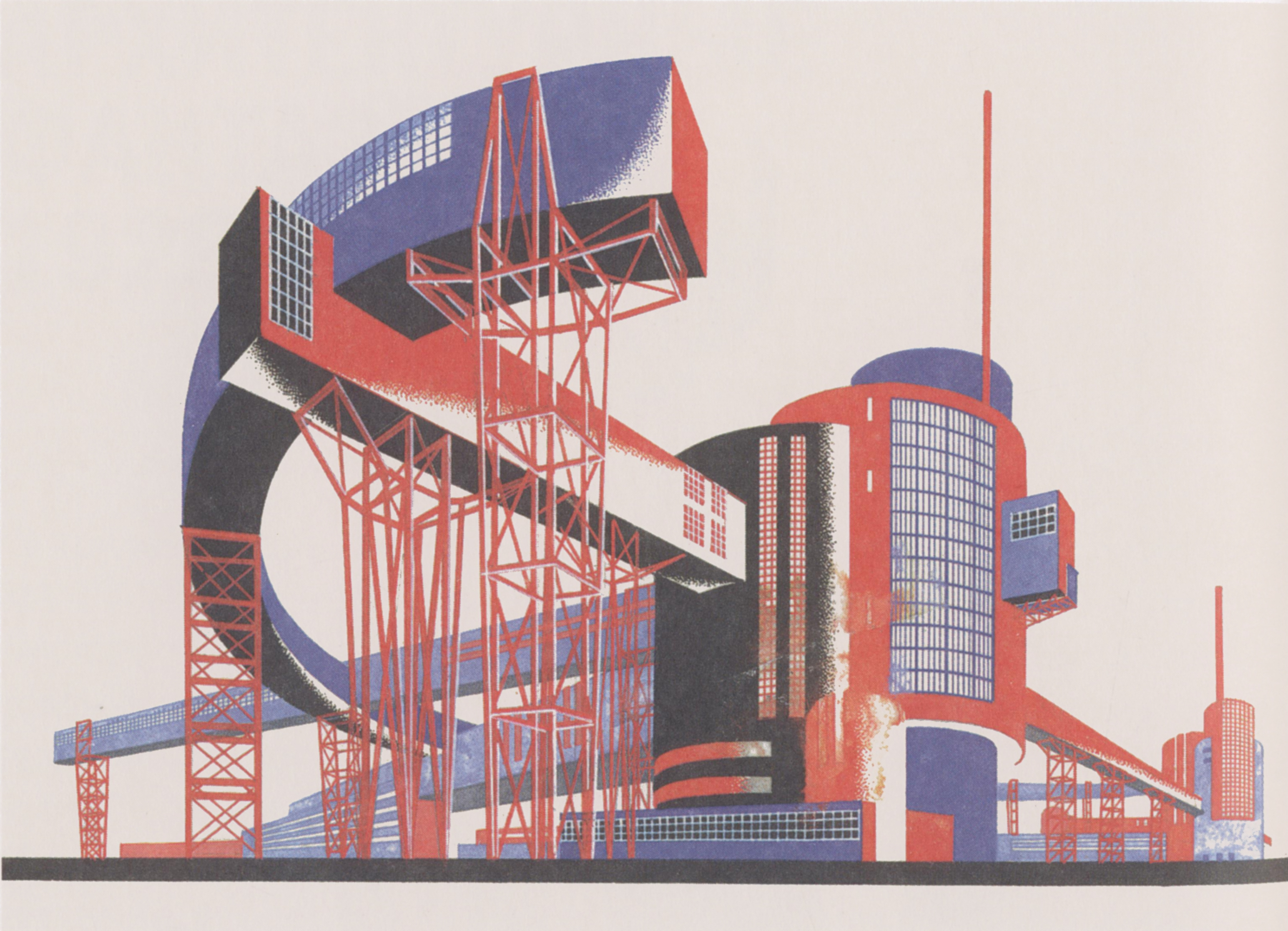Constructivist architecture
Constructivist architecture, or ‘constructivism’, is a form of modern architecture that developed in the Soviet Union in the 1920s. Inspired by the Bauhaus and the wider constructivist art movement that emerged from Russian Futurism, constructivist architecture is characterised by a combination of modern technology and engineering methods and the socio-political ethos of Communism. Despite there being few realised projects before the movement became outdated in the mid-1930s, it has had a definite influence on many subsequent architectural movements, such as Brutalism.
Following the 1917 Russian Revolution, the USSR became economically insecure and unable to embark on major construction projects. Nevertheless, avant-garde design schools began to encourage and inspire ambitious architects and urban planners, in particular the Association of New Architects (ASNOVA) which was established in 1921.
The fundamental tension of Constructivist architecture was the need to reconcile the economic reality of the USSR with its ambition for using the built environment to engineer societal changes and instil the avant-garde in everyday life. Architects hoped that through constructivism, the spaces and monuments of the new socialist utopia, the ideal of which the Bolshevik revolution had waged, could be realised.
As such, constructivist architecture was used to build utilitarian projects for the workers, as well as more creative projects such as Flying City, that was intended as a prototype for airborne housing.
The main characteristic of constructivism was the application of 3D cubism to abstract and non-objective elements. The style incorporated straight lines, cylinders, cubes and rectangles; and merged elements of the modern age such as radio antennae, tension cables, concrete frames and steel girders. The possibilities of modern materials were also explored, such as steel frames that supported large areas of glazing, exposed rather than concealed building joints, balconies and sun decks.
The style aimed to explore the opposition between different forms as well as the contrast between different surfaces, predominately between solid walls and windows, which often gave the structures their characteristic sense of scale and presence.
The first and perhaps most famous project was one an unrealised proposal for Tatlin’s Tower, the headquarters of the Comintern in St. Petersburg. Many subsequent, ambitious projects were not actually built, but Russia’s fourth-largest city Yekaterinburg is regarded as a ‘Constructivist museum’ including 140 built examples of the form. Another famous surviving example is the social housing project Dom Narkomfin in Moscow.
[edit] Related articles on Designing Buildings Wiki
- Abandoned movie theatres in Russia.
- Architectural styles.
- Art Deco.
- Art Moderne.
- Art Nouveau.
- Bauhaus.
- Brutalism.
- Concept architectural design.
- Deconstructivism.
- Expressionist architecture.
- High-tech architecture.
- Imagine Moscow exhibition.
- Megastructure.
- Metabolism.
- Mimetic architecture.
- Ministry of Transportation Building, Georgia.
- Nowa Huta - Communist tour review.
- Owen Hatherley - Landscapes of Communism.
- Skyscraper.
- Spomeniks.
[edit] External references
- Archdaily - A short history of Yekaterinburg's constructivist architecture
- World of Level Design - Constructivist architecture
Featured articles and news
Latest Build UK Building Safety Regime explainer published
Key elements in one short, now updated document.
UKGBC launch the UK Climate Resilience Roadmap
First guidance of its kind on direct climate impacts for the built environment and how it can adapt.
CLC Health, Safety and Wellbeing Strategy 2025
Launched by the Minister for Industry to look at fatalities on site, improving mental health and other issues.
One of the most impressive Victorian architects. Book review.
Common Assessment Standard now with building safety
New CAS update now includes mandatory building safety questions.
RTPI leader to become new CIOB Chief Executive Officer
Dr Victoria Hills MRTPI, FICE to take over after Caroline Gumble’s departure.
Social and affordable housing, a long term plan for delivery
The “Delivering a Decade of Renewal for Social and Affordable Housing” strategy sets out future path.
A change to adoptive architecture
Effects of global weather warming on architectural detailing, material choice and human interaction.
The proposed publicly owned and backed subsidiary of Homes England, to facilitate new homes.
How big is the problem and what can we do to mitigate the effects?
Overheating guidance and tools for building designers
A number of cool guides to help with the heat.
The UK's Modern Industrial Strategy: A 10 year plan
Previous consultation criticism, current key elements and general support with some persisting reservations.
Building Safety Regulator reforms
New roles, new staff and a new fast track service pave the way for a single construction regulator.
Architectural Technologist CPDs and Communications
CIAT CPD… and how you can do it!
Cooling centres and cool spaces
Managing extreme heat in cities by directing the public to places for heat stress relief and water sources.
Winter gardens: A brief history and warm variations
Extending the season with glass in different forms and terms.
Restoring Great Yarmouth's Winter Gardens
Transforming one of the least sustainable constructions imaginable.

























